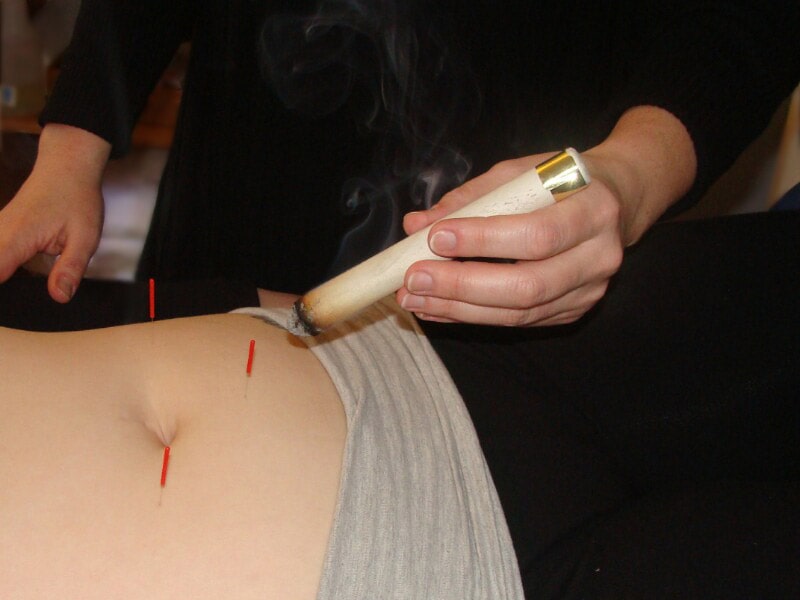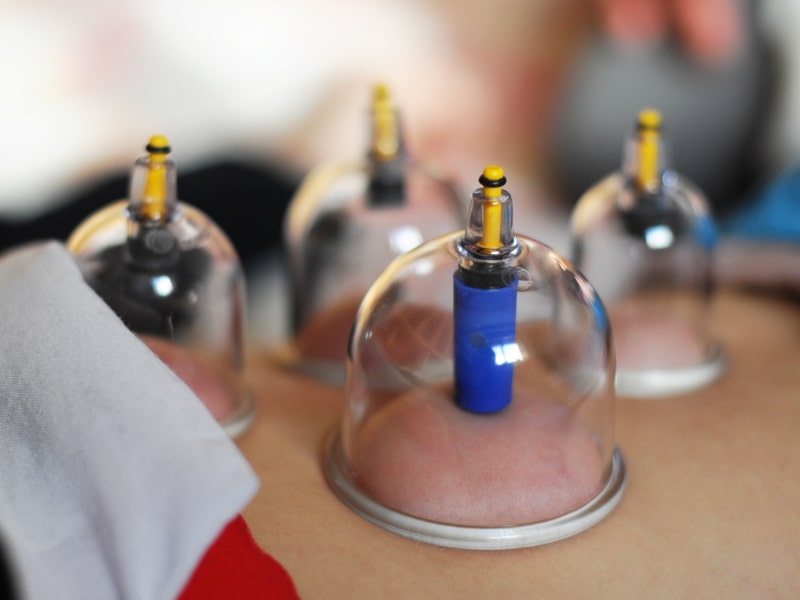
Traditional Chinese medicine has left an undeniable legacy to the West with alternative therapies that care for health and well-being by recovering millenary methods of proven efficacy. You feel closer and closer to them and their oriental wisdom. Like moxibustion, another of their techniques full of therapeutic benefits. What is behind it, where it was born and what it shares with other disciplines such as acupuncture.
There are many questions that may arise about this alternative therapy so rooted in China. In addition to its main benefits, techniques and types of treatments, we are interested in knowing what is unique about moxibustion, and why it uses heat and the mugwort plant as unique medicinal tools.
Moxibustion: from oral learning to the book Nei Jing
Moxibustion is an alternative therapy recovered from traditional Chinese medicine that is effective in preventing and caring for our health. The learning of this technique born more than 3,000 years ago was transmitted from generation to generation between families in an oral form combined with demonstrations, very similar to how acupuncture was later divulged.
Although at the end of the 19th century, during the last period of the Qing dynasty, these two therapies went through a critical stage and the rulers tried to make them disappear within the framework of the abolition of traditional Chinese medicine, the proclamation of the People’s Republic promoted them again and spread them not only in their country.
Acupuncture’s big sister
The technique of moxibustion can also be combined with the methods of acupuncture. Well, to talk about it is to affirm that we are before a therapy that shares its therapeutic essence with acupuncture, although using heat in different points of the body as a basic tool.
After all, both disciplines are born from traditional Chinese medicine, among others, such as phytotherapy and tuina massage. The main link is found in their body stimulation points, since they are the same.
Both are based on the so-called Theory of the Channels, which conceives the human body as a complex circuit of networks through which energy and blood flow, intertwining and accessing different parts of the body. However, some external agents alien to the person, as well as emotional situations arising in daily life are capable of altering this energy, appearing pathologies and diseases.
This is where moxibustion can show its full healing role, rebalancing the body in order to get the blood and energy to recover a good flow. In other words, it restores vital energy until the harmony of the human body is restored.
Although these two disciplines are currently considered as individual therapies and valid in themselves as alternative treatments, it is also common to combine their use to increase their therapeutic effectiveness, since both work to correct the energy flow in the human body.
The powers of the mugwort plant
The mugwort plant is the natural tool of moxibustion and benefits from its healing properties. Even its own name announces its healing secrets, as moxibustion, also known as mokusa, is born from the terms mo (burn) and kusa (herb). In fact, this discipline bases all its effectiveness on the numerous properties of this variety and more specifically on its root.
Once pressed and roasted, it is applied to the body wrapped in paper rolls that can be shaped like sticks, cigars or cones. They are the so-called moxa with which the therapist will work on different points of the body, touching the skin or not, depending on the chosen technique.
Although the use of this plant as the only healing tool in moxibustion today is a reality, this was not always the case. Branches of trees, bamboo and medicinal herbs were used in the composition of moxa until the great qualities of mugwort, which seem to increase when it is preserved for years.

Moxa is the tool used by the therapist to warm specific acupuncture points of the body until they are stimulated. Its slow combustion produces a heat that does not generate flame, as well as a pleasant aroma when handled.
Thanks to this application of heat on the patient’s skin ends, the patient can begin to experience a series of beneficial changes. Specifically, it will trigger a dilation of the capillaries, and therefore an increase in their blood flow, the oxygenation of the treated areas and, finally, a rebalancing of their energy.
Main benefits and contraindications
The mugwort plant is the natural tool of moxibustion and benefits from its healing properties. Another of the singularities of moxibustion is that not only can we consider its application in the face of the need to combat specific and quite common ailments, such as colds and joint pains. It is also correct to think of it as a method to take care of our health in a perfect state, with a more preventive perspective in search of improving our quality of life.
There are many applications that are attributed to this alternative therapy, with many points in common to the benefits of acupuncture, its great ally. Different medical researches have concluded that the biochemical changes experienced in the body as a result of its treatment allow to obtain important improvements, besides its main action of activating the energy.
From strengthening the immune system, to better regulating the digestive system and metabolism, to mitigating states of stress and permanent fatigue, increasing the production of red and white blood cells and hemoglobin, as well as improving coagulation times and the creation of antibodies, treating pathologies such as osteoarthritis, arthritis, rheumatic pain and lumbar rigidity and relieving menstrual and menopausal disorders.
Its effectiveness in atypical pregnancies
Moxibustion can be advised in pregnancies where the fetus is breech in order to modify its posture another of the singularities of moxibustion is its ability to correct abnormalities, such as breech presentation during the woman’s pregnancy, frequent between the second and third trimesters.
In other words, when the fetus is breech and there is little chance that it will turn naturally, it is correct to resort to this alternative discipline so that it can turn and position itself properly before the arrival of the birth, as a therapeutic method that can avoid the need for a C-section, favouring a normal birth. Different clinical studies support its high efficacy, as long as these premises are taken into account:
Once the moxibustion session is over, the patient should abandon himself to relaxation, leave aside any physical and intellectual activity, and not eat or drink.
The appropriate time to apply this therapy is between the 32nd and 38th week of pregnancy. Once again, heat will be the fundamental tool of the treatment.
The sessions should be given during two weeks, applying the heat in a gentle way near the external base of the fifth toe (the Zhiyin acupuncture point) with an approximate duration of 20 minutes.
The mugwort will be able to generate blood stimulation in the woman’s pelvic and uterine area, and there are theories that support its ability to increase the motor activity of the fetus.
This is a simple and safe treatment that is usually well tolerated by the newborn and the mother, who will have to remain seated or semi-sitting during the session.

